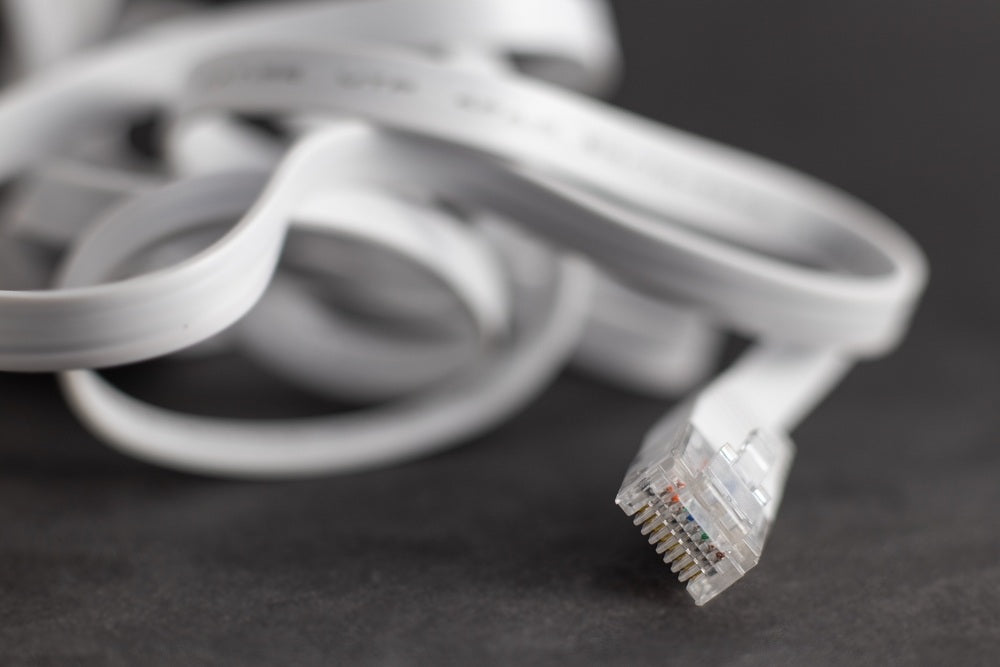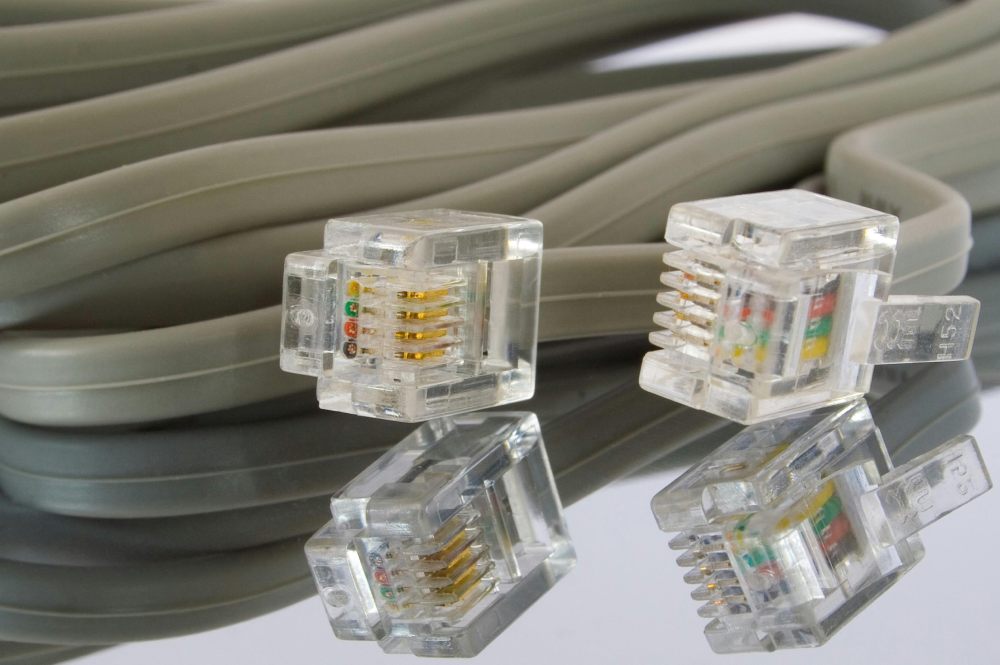News

Ethernet Cables
The Top Benefits of Using a Flat Ethernet Cable for Your Network
When it comes to your network, the choice of cables can significantly affect your internet speed, reliability, and overall user experience. While round cables have been a popular choice for years, flat Ethernet cables are gaining traction due to their unique benefits. In this article, we will delve into these advantages and explain why these Ethernet cables might be the best option for your home or office setup.
What Is a Flat Ethernet Cable?
A flat Ethernet cable is a type of networking cable with a slim, flat design, making it different from traditional round cables. These cables provide the same level of connectivity but are much easier to manage and install in tight spaces. They are widely used for LAN network cables and are often considered the best flat Ethernet cables for modern setups.
Benefits of Using a Flat Ethernet Cable
1. Easy Installation in Tight Spaces
One of the most significant advantages of flat LAN cables is their ease of installation. Thanks to their slim design, these cables can be easily run under carpets, along walls, or through door gaps without creating a noticeable bulge. This makes the installation process a breeze, relieving potential stress or worry.
Perfect for home and office use
Ideal for hiding cables in tight spaces
Reduces cable clutter
2. Enhanced Flexibility
Unlike round cables, these Ethernet cables are more flexible and less prone to damage when bent. This flexibility makes them ideal for use in areas where cables need to be routed around furniture or through narrow spaces.
Can be bent without compromising performance
Suitable for complex cable management setups
Great for temporary installations
3. Improved Aesthetics
Flat cables are less obtrusive and blend well with the environment. If you are concerned about cable visibility in your home or office, flat LAN cables offer a sleek and professional appearance. Knowing that your network setup not only performs well but also looks good can make you feel proud of it.
Less visible under carpets and rugs
Matches modern interior designs
Suitable for minimalistic setups
4. Better Heat Dissipation
The flat design of these cables helps dissipate heat better than round cables. This can improve the cable’s longevity and performance, especially in environments with multiple devices connected to the network.
Reduces the risk of overheating
Ensures consistent performance over time
Ideal for high-traffic network setups
5. Reduced Interference
Due to their unique design, Straight Ethernet cables are less likely to experience electromagnetic interference (EMI). This means more reliable connections and fewer disruptions in network performance.
Provides stable internet speeds
Minimizes signal loss
Ideal for gaming, streaming, and large file transfers
6. Cost-Effective Solution
Despite their numerous advantages, these flat cables are often more affordable than their round counterparts. They provide excellent value for money without compromising on performance.
Budget-friendly option
Available in various lengths and categories
Great for both residential and commercial use
Best Use Cases for Flat Ethernet Cables
These Ethernet cables are versatile and can be used in a variety of scenarios, including:
Home Networks: Ideal for running cables under carpets and along walls without creating a mess.
Office Setups: Perfect for neat and organized office environments.
Gaming and Streaming: Ensures stable and fast connections for gamers and streamers.
Temporary Installations: Suitable for events or temporary setups where cables need to be easily removed.
How to Choose the Best Flat Ethernet Cables
When selecting the best flat Ethernet cables, consider the following factors:
1. Cable Category
Ethernet cables are divided into different categories, such as Cat5e, Cat6, Cat6a, and Cat7. The category you choose will depend on your speed and bandwidth requirements.
Cat5e: Suitable for basic home use
Cat6: Ideal for faster speeds and reduced interference
Cat7: Best for high-performance networks
2. Length
You can choose the right cable length depending on your setup requirements. Flat cables are available in various lengths to suit different needs.
Short cables for small setups
Long cables for large spaces or complex routing
3. Durability
Look for cables made from high-quality materials that can withstand wear and tear, especially if they will be installed in high-traffic areas.
Shielded cables for better protection
PVC coating for added durability
FAQs about Flat Ethernet Cables
1. Are Flat Cables Better Than Round Cables?
A: Flat Ethernet cables are better suited for specific scenarios, such as installations in tight spaces or areas where aesthetics matter. However, both flat and round cables offer similar speed and connectivity.
2. Does Flat Ethernet Affect Internet Speed?
A: No, the shape of the cable does not affect internet speed. The speed depends on the cable category and the quality of your network hardware.
3. Can I Use Flat Ethernet for Gaming?
A: Yes, flat Ethernet cables are excellent for gaming. They provide stable connections with minimal interference, ensuring a smooth gaming experience.
4. How Do I Install a Flat Ethernet Cable?
A: Installing a flat Ethernet cable is simple. You can run it under carpets, along walls, or through door gaps. To keep the cable in place, use cable clips or adhesive strips.
5. Are Flat Ethernet Cables Durable?
A: Yes, flat Ethernet cables are durable and can withstand regular use. However, choosing high-quality cables ensures better longevity and performance.
Conclusion
Flat Ethernet is a modern solution for network setups, offering unique benefits that traditional round cables cannot match. From easy installation and flexibility to improved aesthetics and reduced interference, flat LAN cables provide a practical and cost-effective way to optimize your network. Whether you are setting up a home network or managing a commercial office, investing in the best flat Ethernet cables can significantly enhance your overall connectivity experience. Choose the right cable based on your specific needs, and enjoy a clutter-free and efficient network setup.

Ethernet Cables
Types of Ethernet Cables: Which One Do You Need?
So, today, we're going to dive into the fascinating world of Ethernet cables. You might be wondering, "What’s an Ethernet cable, and why do I need to know about it?" Don’t worry. Moreover, we’re going to uncover all the types of ethernet cables mysteries together. So, by the end of this blog, you’ll be an Ethernet cable expert!
What is an Ethernet Cable?
Moreover, first things first, let's understand what an Ethernet cable is. Furthermore, imagine you have a super-fast highway for your internet. Moreover, an Ethernet cable is like the road that connects your computer, gaming console, or smart TV to the internet. Furthermore, without this cable, your devices wouldn't be able to talk to each other or to the internet.
Why Do We Need Ethernet Cables?
So, ethernet cables help us enjoy all the cool stuff we do online, like playing games, watching videos, or doing homework. Moreover, they ensure that our internet connection is strong and fast.
Furthermore, if you love streaming cartoons or gaming with your friends, having the right types of ethernet cables is super important. Moreover, now, let’s explore the different types of Ethernet cables you might come across.
Types of Ethernet Cables
So, there are several types of Ethernet cables, and each has its unique features. Moreover, let’s break them down one by one:
1. Cat5 (Category 5) Cable
Speed and Distance: Cat5 cables can support speeds up to 100 Mbps and are effective for distances up to 100 meters (about the length of a football field!).
When to Use: These types of ethernet cables are a bit older and mostly used for basic internet tasks, like browsing the web or checking emails. They’re good for small networks where you don’t need super-fast internet.
Fun Fact: Cat5 cables were widely used in the early 2000s. They’re like the grandpas of Ethernet cables!
2. Cat5e (Category 5 Enhanced) Cable
Speed and Distance: Cat5e cables can support speeds up to 1 Gbps (that's 1,000 Mbps!) and can also go up to 100 meters.
When to Use: If you want a little more speed for streaming videos or online gaming, Cat5e is a better choice. It reduces interference, which means a clearer connection.
Fun Fact: "Enhanced" means it’s improved over the old Cat5 cables, making it more reliable for today’s internet needs!
3. Cat6 (Category 6) Cable
Speed and Distance: Cat6 ethernet cables can handle speeds up to 10 Gbps (that’s super fast!) and can work effectively up to 55 meters.
When to Use: Use Cat6 cables if you’re into serious gaming or have lots of devices connected to your network. They’re great for homes with high-speed internet plans.
Fun Fact: Cat6 cables have better insulation, which helps reduce noise and interference. They’re like the superheroes of Ethernet cables!
4. Cat6a (Category 6 Augmented) Cable
Speed and Distance: Cat6a cables support speeds of 10 Gbps but can reach up to 100 meters.
When to Use: These cables are perfect for large homes or offices with heavy internet use. They ensure a strong connection even when multiple devices are online.
Fun Fact: The "a" in Cat6a stands for "augmented," which means it’s an upgraded version of Cat6. Think of it as a superhero with even more powers!
5. Cat7 (Category 7) Cable
Speed and Distance: Cat7 cables can handle speeds up to 10 Gbps and can go up to 100 meters.
When to Use: Cat7 cables are great for future-proofing your home network. If you want to ensure you’re ready for anything the internet throws at you, these cables are a wise choice.
Fun Fact: Cat7 cables have shielding to protect against interference. It’s like having a protective shield around your internet connection!
6. Cat8 (Category 8) Cable
Speed and Distance: CAT8 Lan Flat Cables cables are the fastest, supporting speeds up to 25-40 Gbps! They can run effectively up to 30 meters.
When to Use: If you’re a super gamer or a tech enthusiast, Cat8 is your best friend. They’re ideal for data centers or places that need lightning-fast internet.
Fun Fact: Cat8 cables are the newest kids on the block, designed for high-performance networking. They’re like the flash of Ethernet cables!
Conclusion
Now you know all about Ethernet cables! From the basic Cat5 to the speedy Cat8, there’s a cable for every need. Understanding these cables helps you make smart choices about your internet connection, whether you’re gaming, streaming, or learning.
Remember, just like in a video game, having the right fiber optic HDMI cables can make all the difference. Next time you set up your internet or connect your devices, you’ll know exactly which Ethernet cable to choose. Happy surfing, young internet adventurers!
